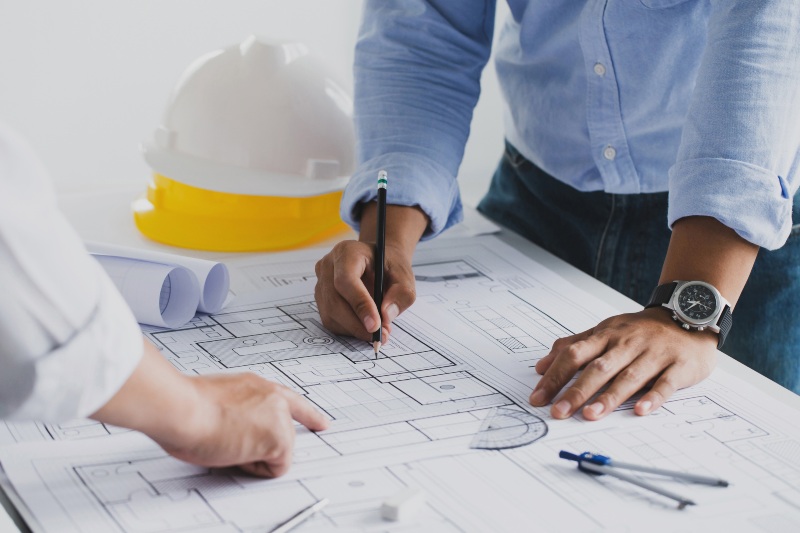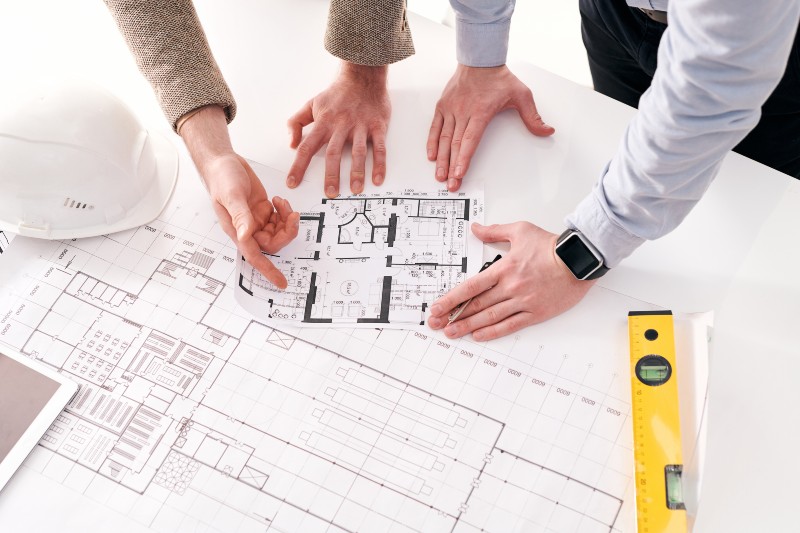Mastering Construction Blueprint Reading
If you work in construction, blueprints are one of the most important tools you’ll use. These detailed drawings serve as a guide for contractors, engineers, architects, and project managers, helping ensure every part of a project is built correctly. Whether you’re handling a home remodel or a large-scale commercial build, reading construction blueprints accurately can prevent costly errors and keep everything on schedule.

Understanding the Basics of Construction Blueprints
Think of a construction blueprint like a road map for a building project. Just like a map helps travelers reach their destination, blueprints provide specific instructions to bring a design to life. They show precise measurements, materials, and layouts so the final structure matches the original plan.
For both residential and commercial construction reading, these blueprint documents play a crucial role in keeping teams aligned and avoiding misunderstandings on the job site. Since blueprints are drawn to scale, every inch on the paper represents a specific real-world measurement. They also use standardized symbols to indicate key elements like plumbing, electrical outlets, and structural supports. Understanding architectural drawings isn’t just about recognizing symbols; it’s about seeing how they fit together to create a complete structure.
Key Components of a Construction Blueprint
Blueprints consist of several sections, each with a different purpose. Here’s a breakdown of the most important components:
1. Title Block
The title block is found in the lower right-hand corner of a blueprint and includes essential project details, such as:
- Project Name & Location – Identifies where and what the project is.
- Drawing Title – Describes the specific sheet.
- Date – Shows when the drawing was created or last revised.
- Architect or Engineer – Lists the name and credentials of the professional responsible.
- Scale – Explains the drawing’s proportions.
- Revision History – Tracks any changes made over time.
2. Legend & Symbols
Blueprints use a set of standardized construction site plan symbols to represent doors, windows, plumbing fixtures, and electrical components. The legend provides an explanation of these symbols. Other specialized symbols may include:
- Topographic symbols – Used for grading and site development.
- Structural symbols – Represent beams, columns, and other load-bearing components.
- Utility symbols – Show the location of water pipes, sewer lines, and electrical conduits.
- Surveying symbols – Indicate land survey points and elevation markers.

3. Floor Plans
A floor plan gives a bird’s-eye view of a building’s layout, showing walls, doors, and room arrangements. When reading commercial construction blueprints, you may find that they also include fire exits, accessibility features, and HVAC details.
4. Elevations
Elevation drawings show the exterior of a building from different perspectives—front, back, and sides. These visuals help architects and builders understand roof heights, window placements, and exterior finishes.
5. Sections & Details
Section drawings slice through a structure to reveal what’s inside, such as framing, insulation, and plumbing. Detailed drawings zoom in on specific features like staircases, foundation supports, and wall joints.
6. Mechanical, Electrical, and Plumbing (MEP) Plans
These blueprints focus on HVAC, electrical wiring, and plumbing systems. Since these systems often overlap, careful reading is necessary to prevent installation conflicts.
7. Revisions & Notes
Blueprints frequently get updated to reflect design changes. Always check the latest revisions to make sure you’re working with the most up-to-date information.
8. Grid System
Larger or more complex blueprints often include a grid system to help users quickly locate sections within the drawing. This system consists of:
- Letters and Numbers – Creating a coordinate system (e.g., A1, B5).
- Reference Points – Aiding in communication and issue resolution.
9. Construction Sheets & Plans
Construction sheets categorize different aspects of the project, each designated by a specific letter code:
- General (G) – Overall project coordination, notes, and guidelines.
- Survey/Mapping (V) – Land survey and site mapping details.
- Geotechnical (B) – Soil and subsurface reports.
- Civil (C) – Site grading, erosion control, and landscaping details.
- Landscape (L) – Plans for trees, shrubs, and hardscape elements.
- Structural (S) – Load-bearing components, foundations, and framing details.
- Architectural (A) – Floor plans, elevations, and finish specifications.
- Mechanical (M) – HVAC and related mechanical system details.
- Electrical (E) – Power distribution and lighting diagrams.
- Plumbing (P) – Water, sewer, and drainage system layouts.
10. Site Plans & Specialized Drawings
Beyond the primary construction drawings, blueprints may contain specialized plans such as:
- Site Plans – Indicating the project’s footprint, surrounding landscape, and access roads.
- Grading Plans – Showing topography and elevation changes to ensure proper drainage.
- Erosion Control Plans – Mitigation strategies for soil stability and environmental impact.
- Utility Plans – Mapping water, electricity, and sewage connections.
11. Material & Resource Quantification
Blueprints also specify the materials, labor, and equipment needed for construction. This helps with:
- Material Estimation – Ensuring the right amount of materials is ordered.
- Equipment & Workforce Planning – Identifying the necessary tools and workers.
- Scheduling Work – Organizing tasks to avoid delays and keep the project on track.
How to Interpret Different Types of Construction Blueprints
Not all blueprints are the same. A full set of construction blueprint reading documents typically includes different types of plans:
- Architectural Plans – Layouts of rooms, doors, windows, and design features
- Structural Plans – Details of load-bearing elements, foundations, and framing
- MEP Plans – Locations of HVAC, electrical, and plumbing systems
- Site Plans – The entire property layout, including driveways, sidewalks, and landscaping
- Foundation Plans – The footings and reinforcements that support the structure
Tips for Reading Blueprints Like a Pro
Learning to read blueprints takes practice, but these tips can help:
- Start with the Title Block – It gives you an overview of the project and key details.
- Use the Drawing Index – Many blueprints have multiple pages, and the index helps you navigate them.
- Cross-Reference Different Sections – Don’t rely on just one page; compare different parts of the blueprint to see how they work together.
- Use a Scale Ruler – Since blueprints are drawn to scale, a scale ruler helps measure dimensions correctly.
- Mark Important Features – Highlight essential components like load-bearing walls, plumbing lines, and electrical circuits.
- Keep Learning – Industry standards and symbols change over time, so staying updated is crucial.

Common Mistakes to Avoid
Even professionals make mistakes when reading blueprints. Here are some common errors and how to avoid them:
- Ignoring Scale – Always check the scale for accurate measurements.
- Skipping Revision Notes – Missing an update can lead to costly mistakes.
- Overlooking Section Views – These provide crucial insights into hidden structural elements.
- Misreading MEP Layouts – Incorrect interpretation can cause installation problems.
- Failing to Check Local Codes – Every project must comply with local regulations.
Why Blueprint Literacy Matters in Wisconsin
In Wisconsin, construction projects must follow specific building codes and zoning rules. Whether working on a renovation or new construction, properly reading commercial construction blueprints ensures compliance with these regulations. Misreading a blueprint can lead to delays, fines, or even project shutdowns.
Blueprint literacy also improves efficiency. When everyone on a construction team understands the plans, work progresses smoothly with fewer mistakes. If you’re in the industry, improving your blueprint reading skills can help you advance in your career and stand out as a knowledgeable professional.
Want to Build with Precision? Contact Advanced Building Corporation Today!
Understanding how to read construction blueprints is essential for any building project. At Advanced Building Corporation, serving South Central Wisconsin, we have over 30 years of experience providing top-notch design-build solutions. Whether you need help understanding architectural drawings or require expert guidance for your next commercial project service, our team is here to assist. Contact us today and experience our commitment to precision, quality, and integrity.
